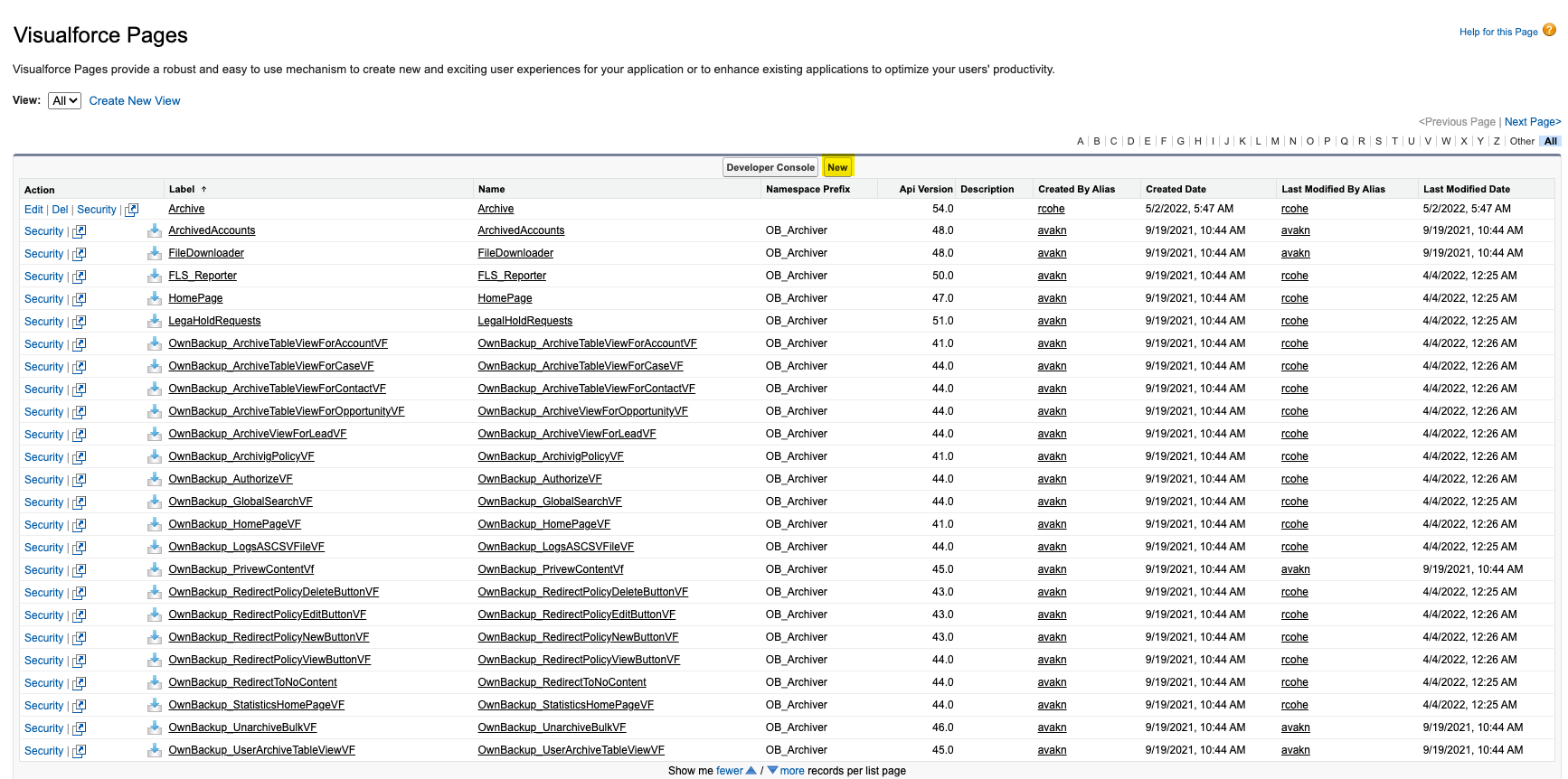

There are three types of email limits in Salesforce, per each origination type (described here). As a last resort - evaluate purchasing additional storage from Salesforce.Look at the detailed storage information and optimize the schema, e.g., replace junction objects with lookups wherever possible.Clean up ‘orphaned records’, i.e., records for objects that could not be set up as master-detail and do not get deleted along with their ‘master’ records.Consider external file storage alternatives like Box.com when storing large volumes of files.
OWNBACKUP ARCHIVER ARCHIVE
There are off-the shelf archive packages such as ownBackup Archiver a backup solution or a replication of Salesforce storage to a relational database can be used to the same effect.
OWNBACKUP ARCHIVER SOFTWARE
Warning level - system administrators need to examine what is happeningĬritical - usually triggers an action to suspend offending user or software package Normal level allowing for daily spikes such as extra backups, data warehouse refreshes, etc. At Nextian we recommend setting API notification thresholds as follows: 30-40% It is possible to set up API usage alert notifications via Setup → Environments → Monitoring → API Usage Notifications ( more information). This strategy is implemented by the Nextian RMM, which integrates Salesforce with NMS/RMM/Observability systems. individual application statistics follow. only information for the last 24 hours: "DailyApiRequests": The limits API call returns fewer details, i.e. Salesforce ‘API Usage Last 7 Days’ report Select the API Usage Last 7 Days report.Navigate to the Administrative Reports folder.Switch to classic user experience (user profile icon → Switch to Salesforce Classic).Please take a look at his section below for possible remedies.ĪPI limits are dependent on many factors (type of org, edition, number of users, additional API purchases, etc.) and can be checked in Setup → Company Settings → Company Information: Salesforce API limits information Obtaining detailed informationĪPI usage consumption details are available from the API Usage Last 7 Days report, which is only available in the classic experience. In our experience, the most common problem with exhausting API limits by far is inefficient programming. When the limits are exhausted, Salesforce becomes inaccessible until usage counts are re-set. API calls are a metered resource and have 24 hours’ limits. They are used by third-party tools and add-ons such as backups, reporting tools, etc. * Based on the return of v50.0 of the limits API API callsĪPI calls are the only integration interface to Salesforce. This post provides information on monitoring resource usage as well as addressing problems with reaching the limits. This however changes when adding more Salesforce components such as quoting, order processing, billing or integrating with third party systems. Organizations that use Salesforce as a ‘vanilla CRM’, typically do not need to worry about anything else than user counts and data storage. User count is the most obvious example as it drives monthly customer charges, however there about 50 other limited resource types * such as numbers of scratch orgs, dashboards, mass emails sent and others. Like many other cloud platforms Salesforce monitors and limits resource usage on its instances (orgs).


 0 kommentar(er)
0 kommentar(er)
